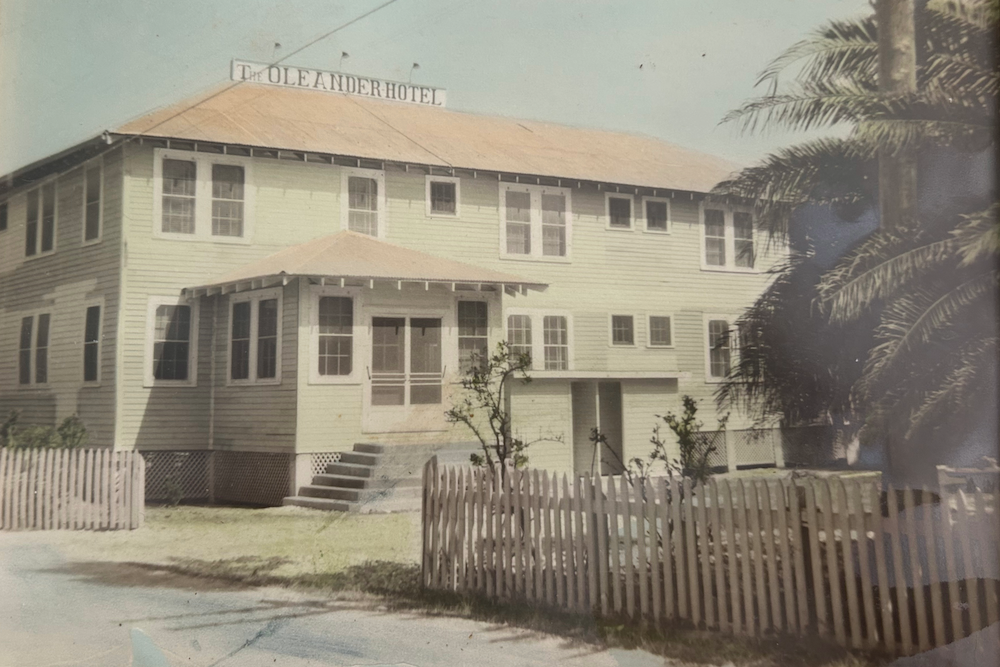Tulane grad helps keep the Louisiana Gulf Coast, and its story, alive
With the help of a recent Tulane graduate, a nonprofit has placed Grand Isle’s nearly century-old Oleander Hotel on the National Register of Historic Places, ensuring its preservation as part of Louisiana’s coastal heritage.
Allyson Hinz began working on the project in 2023 as part of an Introduction to Historic Preservation class after Restore Grand Isle approached the school for help to secure landmark status for the old hotel.
“The whole idea was to go through the learning process of putting together a nomination,” said Hinz, who graduated from the Tulane School of Architecture and Built Environment in 2025 with a master’s degree in historic preservation. “It involves a lot of research, using resources at your disposal to stitch together a narrative about the property.”
Hinz viewed the project as a way to keep a piece of Louisiana’s coast — and its story — alive.
“The building is a symbol of a time when tourism on the island really flourished,” said Hinz, a native of Iowa who now works at the New Orleans-based design firm Cicada.
The Oleander opened in 1929, the same year Grand Isle received electricity, radio and telephone service. Featuring a restaurant with fine dining and 29 guest rooms with screened porches, it was billed as a vacation getaway.
The building is privately owned, but Restore Grand Isle plans to buy it and convert it into a visitor and cultural arts center with permanent exhibits, meeting rooms and space for visiting artists. So far, the group has raised $293,000 out of the $400,000 needed for the purchase.
Achieving landmark status through the National Register of Historic Places makes the property eligible for federal and state tax incentives and grants for restoration.
“The process requires extensive research not just into the physical building and its placement but also into its unique narrative and social history,” said Professor of Practice Heather Veneziano, director of the Historic Preservation program. “It is extremely labor and time intensive, but it can provide buildings and their communities a great deal of leverage and hope in terms of spurring economic development, adding pride to a community and supplying resources to apply for restoration grants.”
Hinz said the biggest hurdle was winning approval at the state level through the Louisiana Office of Cultural Development’s Division of Historic Preservation, which requires a property to meet strict criteria to advance to the national registry. The criteria deal with the property’s age, history and significance.
She spent many long hours researching the structure, both through public records and visits to Grand Isle, a two-hour drive from New Orleans. This past spring, the state approved the nomination and advanced it to the National Register of Historic Places, which approved the designation in late July.
Paul Christiansen, a spokesman for the nonprofit Restore Grand Isle, said the group’s partnership with the Tulane School of Architecture and Built Environment was instrumental in securing landmark status for the Oleander Hotel. He singled out Hinz for her work.
“Allyson has truly been a valuable member of this project,” he said. “We’re incredibly grateful for her dedication.”


